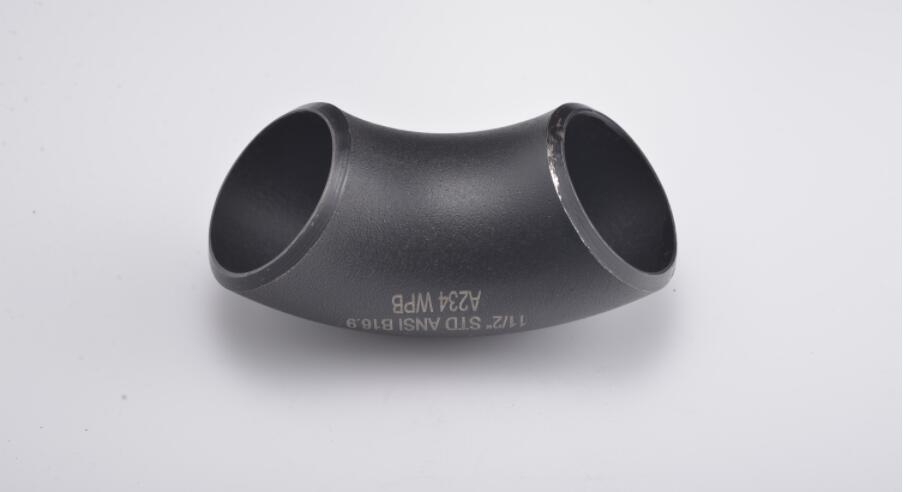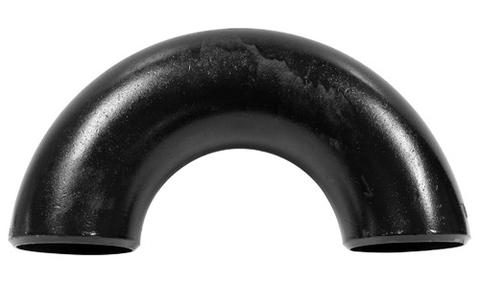Let you know about carbon steel elbow
| Property | Specification |
|---|---|
| Material Type | Carbon Steel |
| Material Grade | ASTM A234 Grade WPB |
| Manufacturing Standard | ASME B16.9 |
| Nominal Size (Nominal Diameter) | Various sizes available |
| Pressure Class or Schedule | Commonly SCH 40, SCH 80, etc. |
| Manufacturing Method | Seamless or Welded |
| Bend Angle | 45° |
| Radius of Bend | Standard or Long Radius |
| End Connections | Butt-weld (Plain or Beveled Ends) |
| Surface Treatment or Coating | Varies (e.g., Galvanized, Epoxy) |
| Testing and Inspection Requirements | As per ASME B16.9 and ASTM A234 |
This table provides a basic overview of the specifications commonly associated with a carbon steel elbow. Please note that the actual specifications may vary based on project requirements, industry standards, and specific application needs. Adjustments may be necessary to match the precise details relevant to your context.

| Model Number | Nominal Size (inches) | Bend Angle | Radius of Bend | Schedule | Material Grade | End Connections |
|---|---|---|---|---|---|---|
| CSBE-45-1 | 1 | 45° | Standard | SCH 40 | ASTM A234 Grade WPB | Butt-weld (Beveled Ends) |
| CSBE-45-2 | 2 | 45° | Long Radius | SCH 80 | ASTM A234 Grade WPB | Butt-weld (Plain Ends) |
| CSBE-45-3 | 3 | 45° | Standard | SCH 160 | ASTM A234 Grade WPB | Butt-weld (Beveled Ends) |
| CSBE-45-4 | 4 | 45° | Long Radius | SCH 40 | ASTM A234 Grade WPB | Butt-weld (Plain Ends) |
| CSBE-45-6 | 6 | 45° | Standard | SCH 80 | ASTM A234 Grade WPB | Butt-weld (Beveled Ends) |
Note: This is a fictional representation. Actual model numbers, sizes, schedules, and specifications may vary based on industry standards, manufacturers, and specific project requirements.

Application of carbon steel elbow
Carbon steel elbows find widespread applications in various industries and infrastructure projects where changes in the direction of piping systems are required. These applications include:
Pipeline Systems:
Carbon steel elbows are crucial components in pipeline systems, facilitating changes in fluid flow direction. They are used in industries such as oil and gas, petrochemical, and chemical processing.
Oil and Gas Transmission:
In the oil and gas sector, carbon steel elbows are employed to redirect the flow of crude oil, natural gas, and other hydrocarbons within pipeline networks.
Power Generation:
Found in power plants, carbon steel elbows help navigate the flow of water, steam, or other fluids around various equipment and machinery.

Chemical Processing:
Used in chemical plants to adjust the direction of chemical flows, ensuring efficient and controlled processing.
Construction and Building Services:
Widely utilized in plumbing and heating systems within buildings and construction projects.
Shipbuilding:
Applied in ship pipelines to redirect the flow of fluids, including water and fuel, as required in the ship’s design.
Mining and Minerals Processing:
Employed in mining operations for the transportation of minerals and slurries, where changes in direction are necessary.
Water Treatment Plants:
Utilized in water treatment facilities to adjust the flow of water and chemicals within the piping infrastructure.
HVAC Systems:
Found in heating, ventilation, and air conditioning systems to change the direction of air or coolant flow.
Food and Beverage Industry:
Used in piping systems within food processing plants to redirect the flow of liquids or gases during various stages of production.
Agricultural Applications:
Employed in irrigation systems and agricultural pipelines to change the direction of water flow.
Industrial Process Systems:
Applied across various industrial processes where changes in fluid direction are necessary for efficient operation.
Overall, carbon steel elbows play a critical role in optimizing fluid flow, ensuring structural integrity, and adapting piping systems to meet the specific requirements of diverse industries and applications.
